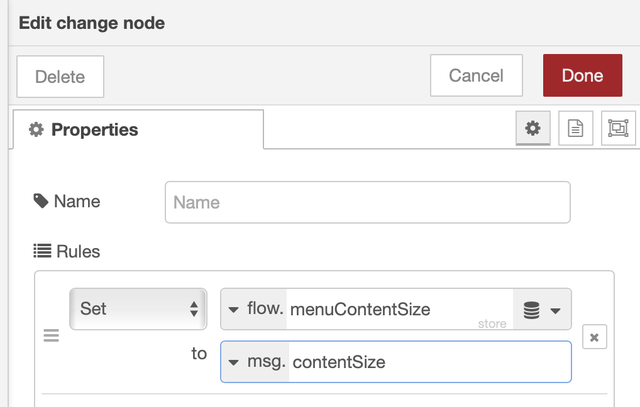Storing data in Node-Red flows using contexts
I’ve been adding some automations to my Home Assistant recently so it can inform us of takeaway menu changes for local restaurants. We have a few favourites and they usually offer different options each day so checking for updates and notifying us via our Telegram bot is pretty easy.
Since I didn’t want to use any library or custom program/service to analyze the page I’m relaying this kind of work to the Node-Red service in my Home Assistant instance. It’s a server that is always working, easy to set up, work and iterate from, and I already have some integrations in place for notifications and other QoL, so it seemed like a 110% win.
Despite having used Node-Red for various purposes along the years I usually delegated state to different services, databases or the filesystem. Not sure why I didn’t check if Node-Red had something built-in– which of course it had.
Node-Red has this concept of context. By default a context is stored in memory only, and you can get/set values from a node or from function nodes very easily:

You can also edit contexts programatically from function nodes using:
1 2 3msg.contentSize = 123 // From another node flow.set("menuContentSize", msg.contentSize) var value = flow.get("menuContentSize")
In my case I wanted the data to persist service restarts and Node-Red provides a context store filesystem based which stores changes in memory and persists them to disk every 30 seconds, more than enough for my use case.
To enable it we need to modify the settings.js file of the Node-Red installation and add the appropriate contextStore parameters:
| |
In this example I created a new context store called state using the filesystem module I talked before and additionally I set up the storage in a custom directory.
This way I can have two context stores: one in memory (the default) and one to store my custom states. You can create more for your use cases but keep in mind that you need to select a different dir for each of them so they wont collide. For more information check the implementation details.
In order to select an store to use you have a dropdown in the change node:

Or use the third argument
flow.set(key, value, store)/flow.get(key, store)to select it programatically.
This allows for this very simple state checks in my case but allows for way more complex behaviors right out of the box.
I’m a very big fan of Node-Red. And I can use that so get notified of takaway menu changes now. Talk about a first world problem.